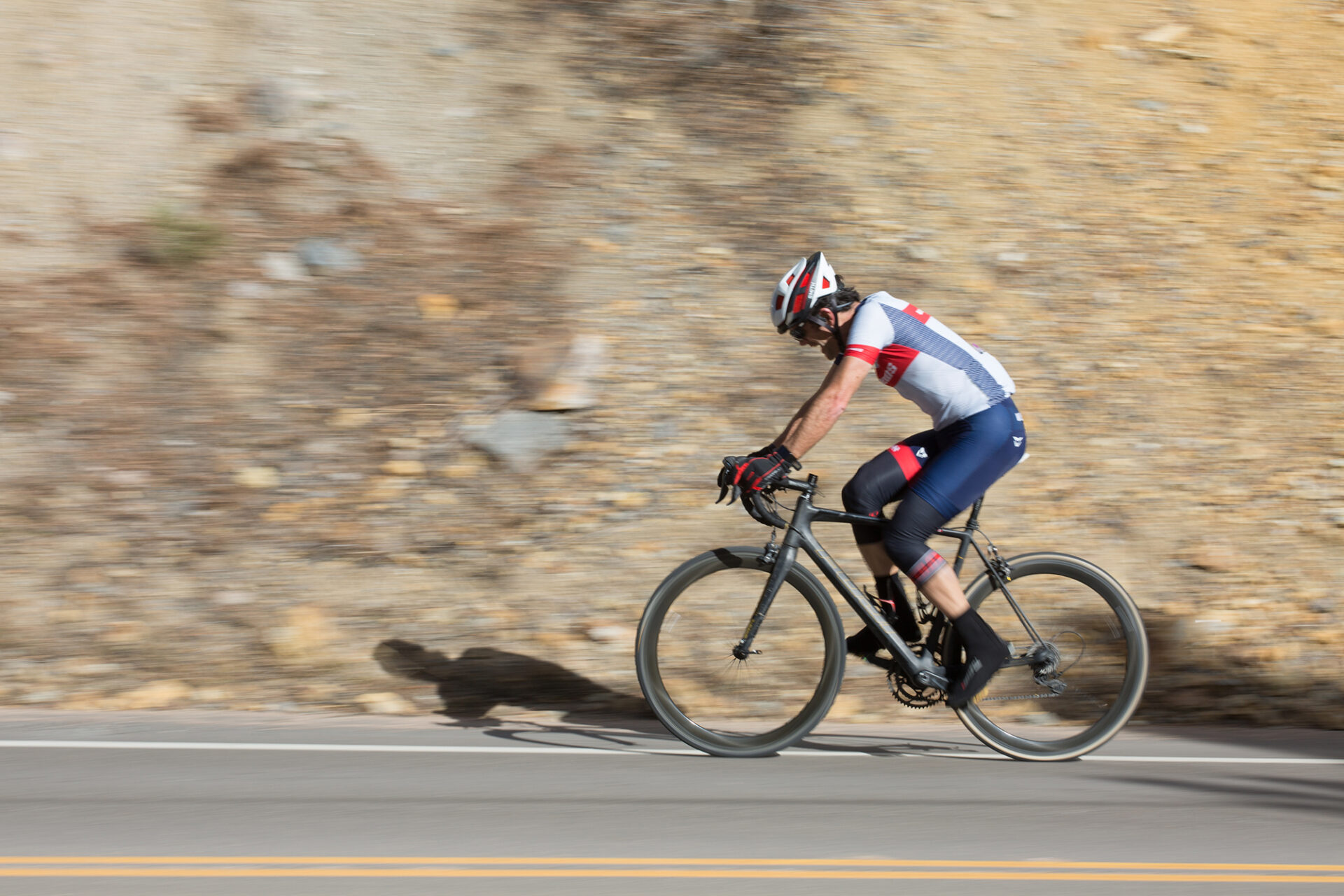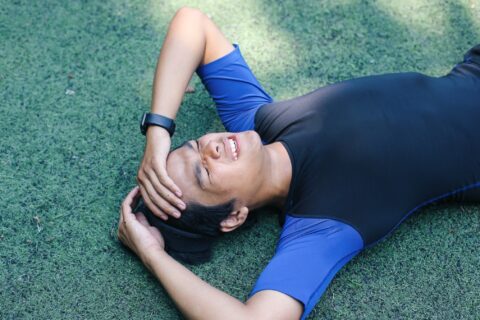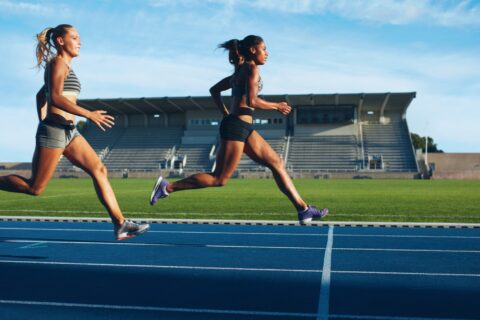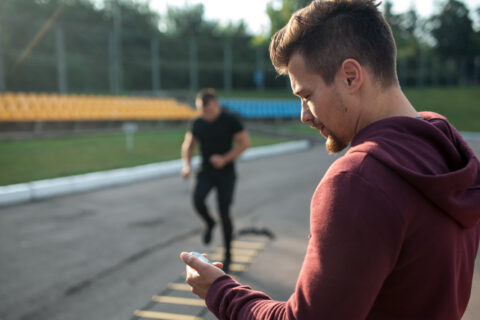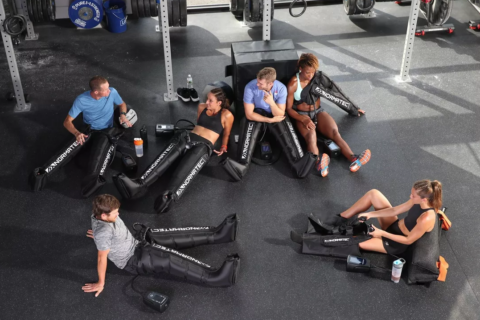Tell me if you’ve heard these before:
- “Peaking is one of the first symptoms of overtraining.”
- “If you do a recovery week right, you’ll feel tired.”
- “Sometimes you ride your best near the end of a fatigue week.”
Most likely, you haven’t heard any of these quotes, because on the surface they appear counterintuitive.
I like to share these thoughts with new athletes I work with, and then wait for their look that says, “How much am I paying you again?”
Almost anyone who’s experienced a big training camp or a period of overreaching can tell you these concepts, as counterintuitive as they are, ring true. It’s almost as if the signals our bodies give us are the opposite of what’s going on. Are our bodies trying to fool us? Why would that be? Understanding why our bodies behave this way is the key to mapping out a season, keeping your training on track, and mastering the art of peaking for a big race.
What are we built for?
Our bodies weren’t designed to ride bicycles. Our bodies were designed to gather food and run away from predators… from lions. Yes, that’s a simplification, but it’s a great way to understand how our bodies work.
When you ride hard on the bike, your body isn’t saying, “Hey, I’m winning the race!” Instead, through the signals it’s receiving from the level of exertion, it’s saying, “That must be a big lion chasing me!” Epinephrine gets pumped into the blood stream, your heart rate spikes, and the fight or flight systems kick in. This is part of the reason why, for example, blood gets shunted from your gut to your muscles. Your body is more concerned about being digested than digesting.
When you keep going hard, for example, in a big training block or during a stage race, your body thinks (or, more appropriately, it responds) like you’re running away from a lot of lions. That response, in this context, is quite intuitive—this is not a time for the body to signal that it’s hurting. This is a time for the body to function at its best, and avoid becoming dinner. It doesn’t realize you’re just training. So, it increases your body’s fight-or-flight hormones (catecholamines) and natural painkillers (cortisol). This is the cocktail swirling in our bodies that are the essence of a peak.
It’s not that we are that much stronger (though that’s part of it.) A peak, when you are setting personal bests and feeling no pain, is the time when the painkillers are freely flowing. Your body just doesn’t feel how much it’s hurting. This is why you can sometimes ride your best near the end of a fatigue week.
Pain versus gain
This process is remarkably effective at keeping your body going. But there is a price to pay. Our natural painkillers are catabolic, which means they inhibit our bodies’ ability to repair muscle tissue. You may be feeling no pain, flying up that climb, setting a new Strava KOM, but you are doing damage—and that damage accumulates.
If you’ve experienced overreaching or even overtraining, you might be familiar with an intriguing pattern. Do you remember feeling amazing for the few weeks leading up to the bout of overreach? Did you then start to feel flat, until you simply couldn’t go as hard? The sensations leading to overreach often take this course because the painkillers are still flowing, but the damage has gotten too great for your body to overcome. If you keep pushing, you’ll enter adrenal fatigue. That’s when your body’s ability to produce cortisol and catecholamines is reduced, below even normal levels. You feel lousy.
Hence, a peak can be the first symptom or warning sign that overreach is near.
Tired is as tired does
Sometimes one of my athletes will call me, livid, after a recovery week. The conversation goes something like: “I was flying a week ago, and now I can barely do a recovery ride. What did you do to me?!”
Maybe you’ve been training a lot and then take a few days off. Do you feel overly tired? Does it feel like your body has been plugging along and then, once you give it the break that it needs, it shuts down and enters full recovery mode?
To truly repair muscle damage, our bodies must clear the painkillers first. So, when we take a rest, our bodies say, “Great, I’m not being chased by lions anymore.” The painkillers get reabsorbed, and we enter recovery mode. It also means that if you do a big week of training and then take a few days off, you’ll feel every last bit of pain and damage your body was so effectively hiding from you once you get back on your bike.
This is why you must let the body repair, and then get the painkillers flowing again, before you’ll feel right on the bike. This is also why Tour de France riders take a three-hour ride on their “rest” days. The worst thing they could do would be to let their bodies go into recovery mode. They aren’t done “running from the lions” so to speak, and they need to keep the painkillers flowing.
How to use your painkillers
You can take advantage of your natural painkillers to improve training gains. The following tips and tricks will help you with timing, understanding different sensations, the art of peaking, and much more.
Know how you’re supposed to feel
Our natural painkillers can fool us, so we can’t always trust how we feel. We have to look for other signs. The best indicator is to know what you did the last few weeks. If you’re training hard and start to feel good, you know the painkillers are flowing. Likewise, if you take a rest after a big block or race, expect to feel bad. It’ll take a few rides to feel like a cyclist again.
Also, keep track of your heart rate. If you notice a depressed heart rate when you train, it could be a sign of early adrenal fatigue. While cortisol levels rise steadily before we wake, for an athlete training hard, the natural painkillers are at their lowest level upon waking. A high waking heart rate and feelings of fatigue are indicators that you are over-reaching.
The art of peaking involves balancing training with rest and recovery
Getting the painkillers flowing may win races, but our muscles won’t truly adapt and rebuild stronger until the painkillers are cleared. We need time off the bike to let the body rebuild. Take a rest after a big training week or hard race. The bigger the training block, the bigger the rest. Some riders will describe the effective use of this training/rest cycle as “getting a bounce.”
If you can learn to harness that uptick in fitness, it can be a great training tool. For the advanced rider who knows his or her body well, there are times when, even if there aren’t any races coming up, and even though they are fatigued, they can push through, and “overtrain” to a degree. Then, when they recover, they can get a bigger benefit than had they just plugged along without accumulating too much fatigue.
Peaking starts with overreaching
When other riders talk about peaking for a race, the focus is usually on how to taper. What is too often neglected is what happens before the taper. Without a big training block beforehand, a taper is just detraining, and you won’t have the painkillers flowing to let you go hard.
About three to four weeks before a big event, it is critical to do a big training block and get the painkillers flowing. You’ll often see this, for example, at the world championships, which often take place in September, just weeks after the Vuelta a España. Often, the top performers at worlds come out of the Vuelta riding that painkiller high.
You might not think that racing as hard as you can for five or six hours a day, for three weeks straight, just two weeks before your target event would be the wisest approach, but that overtraining stimulus followed by the appropriate rest gives them just the bounce they’re looking for.
Peaking ends with a combination of intensity and rest
Our natural painkillers can give us a good boost, but over the years, physiologists have figured out how to give us the best of both worlds: minimal muscle damage with free-flowing painkillers. About a week or two before a key event, reduce your volume but keep the intensity high. As I tell my athletes, keep the training minimal but make sure your tongue is hanging out when you’re on your bike. The intensity keeps the painkillers flowing, but the significantly increased rest still allows a fair amount of muscle repair.
You can’t make it last
When you are at your best, the clock is ticking. That is, you have a time limit before your reduced ability to repair damaged muscles catches up with you. And unfortunately, this time limit is often just a few weeks. Four to six weeks is typically considered the maximum for a sustained peak. Try to peak within a week or two of a key event. Keep it going through the event and then rest.
If you peak too soon
Doing a big training block three to four weeks before and then tapering for a week or two will generally ensure you peak at the right time. But if you find you’re flying weeks before your key event, avoid trying to sustain it. Take a short three- or four-week rest period to clear some of the painkillers, and then get back on schedule.
Don’t be thrown off by recovery weeks
When you take several days off after a hard training block, keep in mind that you’ll probably feel sluggish afterwards. Being mentally prepared for this feeling will help you move through it with ease.
Never race during a recovery week
Early in my coaching career, I had an athlete take four days off before a race. It was a race he could have won. He didn’t last the first lap. We need the painkillers to race at our best.
Timing your build
Manipulating your body’s painkillers and rebuild periods can allow a very precise build to a key event. Everyone is different, so you’ll have to experiment with what works best for you. In some instances, it may take place over a two-month build. If you’re targeting a big event, the build might start with a short break, six or seven days off the bike or super-easy. Then you’d include a couple weeks of functional overtraining which would include big volume. Next, would come a couple weeks of intensity. Finally, add a little rest and hit the target event.
Supplemental painkillers
Unfortunately, supplemental painkillers including nonsteroidal anti-inflammatory drugs (NSAIDs) block muscle repair as well. Studies have shown that taking painkillers like acetaminophen after training can blunt adaptations by up to 50 percent. Limit NSAID use and especially avoid taking them right after a ride.
Don’t forget the mental side
Stress is stress. Catecholamines and cortisol are stress hormones. They are released in response to both mental and physical stress. Therefore, mental stress can inhibit muscle repair just as much as a big training week. If you’re dealing with mental fatigue, remember that that can bring your whole system down. So, regardless of whether it’s physical or mental, the key to fixing it is taking a break.

